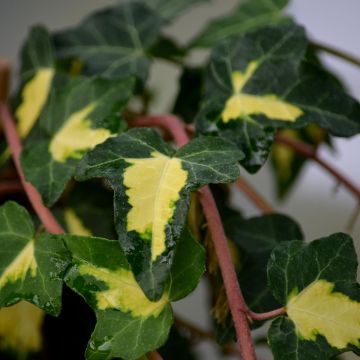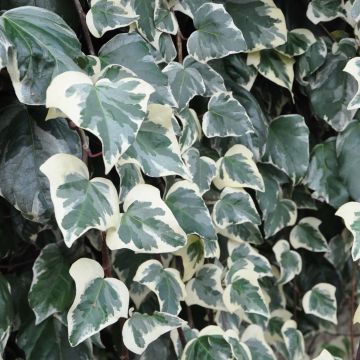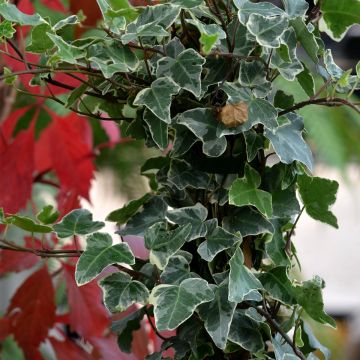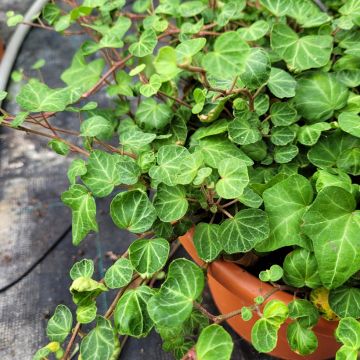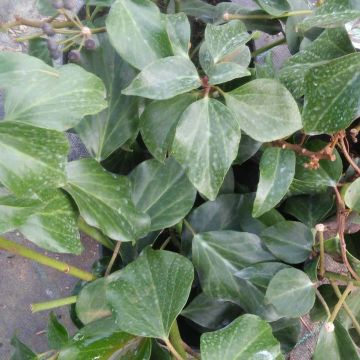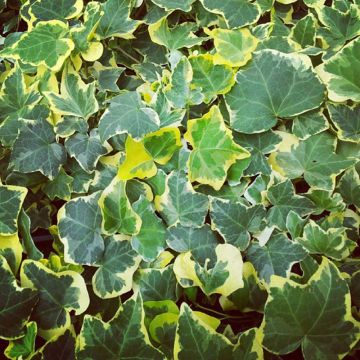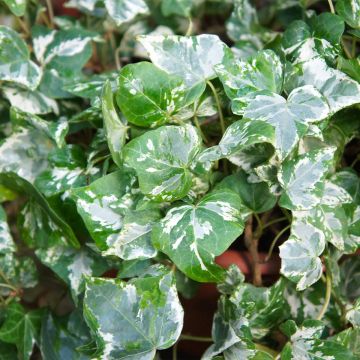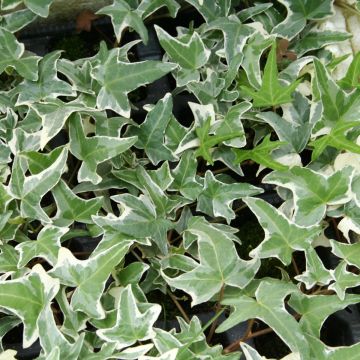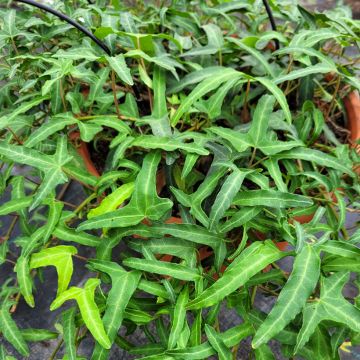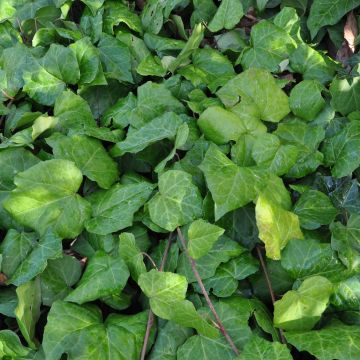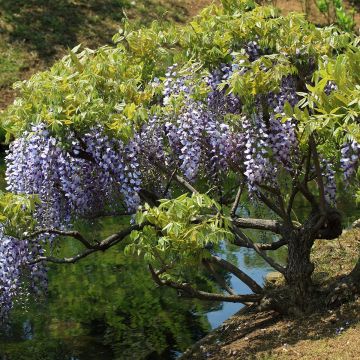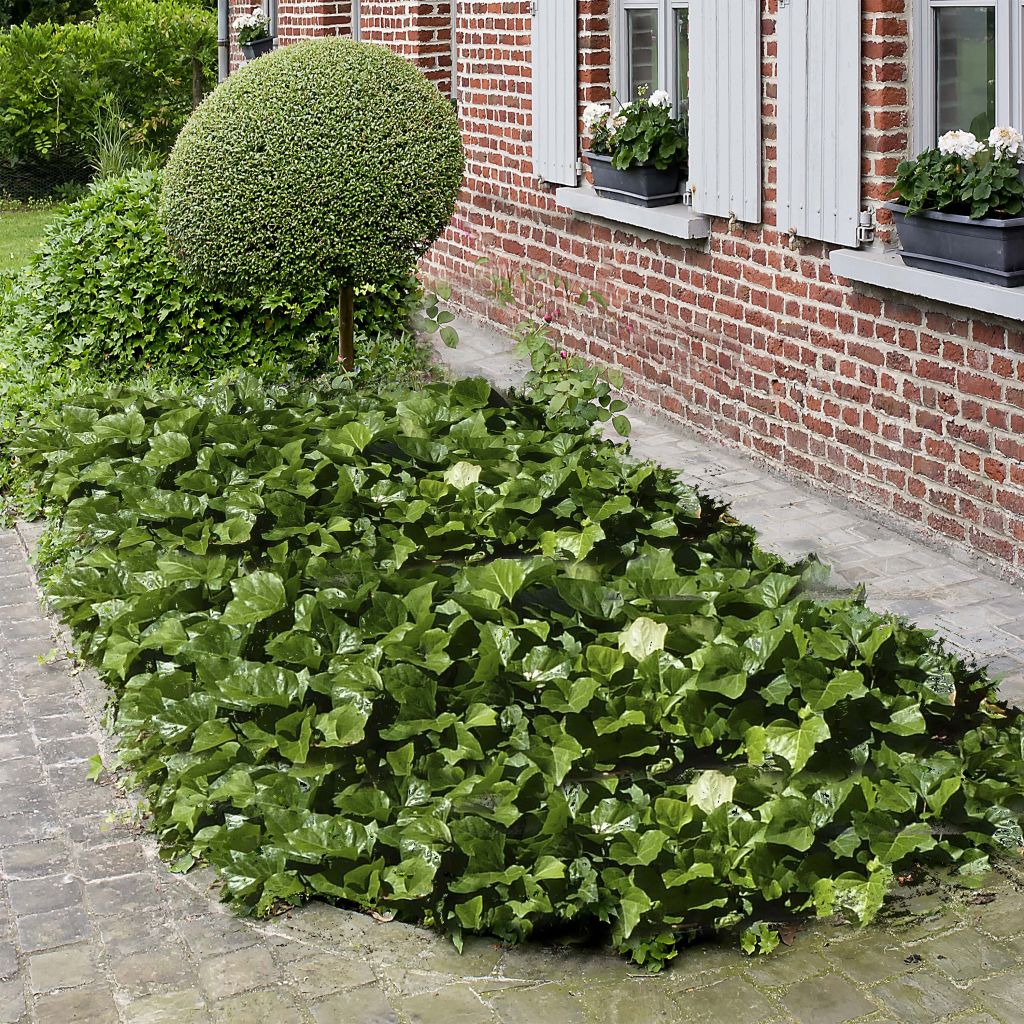

Hedera algeriensis Algerian Bellecour
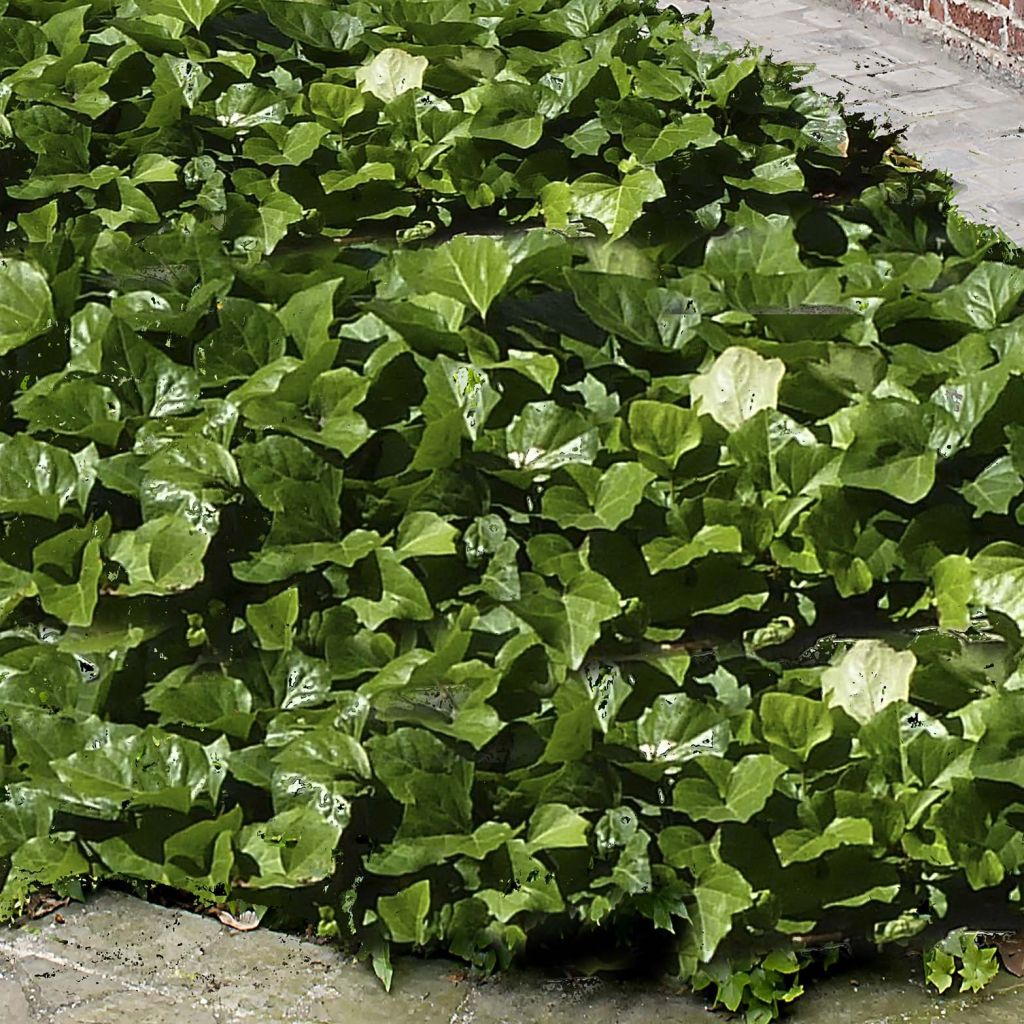

Hedera algeriensis Algerian Bellecour
Hedera algeriensis Algerian Bellecour
Hedera Algerian Bellecour®
Algerian Ivy
Why not try an alternative variety in stock?
View all →This plant carries a 6 months recovery warranty
More information
We guarantee the quality of our plants for a full growing cycle, and will replace at our expense any plant that fails to recover under normal climatic and planting conditions.
From €5.90 for pickup delivery and €6.90 for home delivery
Express home delivery from €8.90.
From €5.90 for pickup delivery and €6.90 for home delivery
Express home delivery from €8.90.

Does this plant fit my garden?
Set up your Plantfit profile →
Description
This Algerian Bellecour Ivy is a creeping form ivy, discovered in the 80s in the Bellecour district in Lyon. It is distinguished by its abundant foliage, which is a bright light green in spring, turning a beautiful dark green in summer. This vigorous variety quickly forms a remarkable evergreen groundcover, very useful in partially shaded or even shady areas where few plants are willing to grow. Ideal for dressing a large slope or the base of a hedge, it is not afraid of drought or mediocre, dry soils in summer. It is THE perfect plant for combating weeds and covering the ground evenly.
The Algerian Ivy, Hedera algeriensis, is a botanical species native to the Tunisian and Algerian coasts, where it grows up into mountainous areas. 'Algerian Bellecour' stands out for its ever-changing foliage colours from spring to summer, as well as its more sprawling habit rather than climbing. Ivies belong to the Araliaceae family, they are cousins of Ginseng and fatsias. Its growth is rapid, allowing it to reach a length of 8 to 10 metres (26 to 33 feet) and a height of 40 to 50 centimetres (16 to 20 inches) in just a few years. Its large, ovate, coriaceous leaves with slightly marked 3 lobes, measuring 12-16 cm (5-6in) long by 10-15 cm (4-6in) wide, have a bright acidic green colour in spring, which darkens significantly with age. Its reddish branches, partially covered with greyish star-shaped hairs, run along the ground. Unlike many varieties, Bellecour Ivy is a sterile variety that does not produce flowers or fruits. Thanks to this, it does not self-seed and can therefore maintain its own characteristics.
It suits everything, and everything suits it! A statement that sounds like a plea for this modest but greatly useful plant, often criticized by gardeners. Algerian Bellecour Ivy quickly enhances all the slightly difficult areas of the garden, in the sun or even in the shade, in a soil full of roots, dry in summer, and limestone, where no lawn can establish itself. Its luxuriant vegetation effectively and perfectly covers the ground, eventually discouraging weeds. To brighten up its monochrome foliage, you can plant spring-flowering bulbs such as botanical narcissus or muscari, which will emerge from the carpet of vibrant green in spring. Algerian Bellecour Ivy is also a good wall cover for all exposures; when trained, it displays a gracefully trailing habit. For example, associate it with periwinkles, Pachysandra terminalis, or a Clematis The President to create large, original, and colourful groundcover on a slope.
Did you know?
Ivy is a depollutant, capable of absorbing pollutants such as benzene from vehicle exhaust in the air. This plant is not afraid of salted soils caused winter gritting, nor cold, nor drought. Even though their reputation as destroyers is well established, ivies have protected old dilapidated walls more than they have destroyed them; it is the removal of this plant firmly rooted in the crevices that causes the masonry to collapse, while the plant maintains its integrity.
Report an error about the product description
Hedera algeriensis Algerian Bellecour in pictures




Plant habit
Flowering
Foliage
Botanical data
Hedera
Algerian Bellecour®
Araliaceae
Algerian Ivy
North Africa
Other Hedera - Ivy
Planting and care
Hedera 'Algerian Bellecour', is easy to grow and can be planted all year round in ordinary soil, well prepared to facilitate its establishment and kept moist during the first two years following planting. Undemanding in terms of soil type, it is not afraid of limestone, rocks, or heavy clay soils if properly loosened and drained. It adapts to all exposures, from sun to shade, but prefers partially shaded and sheltered positions from cold winds. To promote the emergence of young shoots more quickly, fix the first ones to the ground (layering). Do not hesitate to rejuvenate the base by removing old branches. Regular pruning is recommended to shape or maintain it within a defined space. This plant is not susceptible to pests or diseases.
Planting period
Intended location
Care
-
, onOrder confirmed
Reply from on Promesse de fleurs
Foolproof climbers
Haven't found what you were looking for?
Hardiness is the lowest winter temperature a plant can endure without suffering serious damage or even dying. However, hardiness is affected by location (a sheltered area, such as a patio), protection (winter cover) and soil type (hardiness is improved by well-drained soil).

Photo Sharing Terms & Conditions
In order to encourage gardeners to interact and share their experiences, Promesse de fleurs offers various media enabling content to be uploaded onto its Site - in particular via the ‘Photo sharing’ module.
The User agrees to refrain from:
- Posting any content that is illegal, prejudicial, insulting, racist, inciteful to hatred, revisionist, contrary to public decency, that infringes on privacy or on the privacy rights of third parties, in particular the publicity rights of persons and goods, intellectual property rights, or the right to privacy.
- Submitting content on behalf of a third party;
- Impersonate the identity of a third party and/or publish any personal information about a third party;
In general, the User undertakes to refrain from any unethical behaviour.
All Content (in particular text, comments, files, images, photos, videos, creative works, etc.), which may be subject to property or intellectual property rights, image or other private rights, shall remain the property of the User, subject to the limited rights granted by the terms of the licence granted by Promesse de fleurs as stated below. Users are at liberty to publish or not to publish such Content on the Site, notably via the ‘Photo Sharing’ facility, and accept that this Content shall be made public and freely accessible, notably on the Internet.
Users further acknowledge, undertake to have ,and guarantee that they hold all necessary rights and permissions to publish such material on the Site, in particular with regard to the legislation in force pertaining to any privacy, property, intellectual property, image, or contractual rights, or rights of any other nature. By publishing such Content on the Site, Users acknowledge accepting full liability as publishers of the Content within the meaning of the law, and grant Promesse de fleurs, free of charge, an inclusive, worldwide licence for the said Content for the entire duration of its publication, including all reproduction, representation, up/downloading, displaying, performing, transmission, and storage rights.
Users also grant permission for their name to be linked to the Content and accept that this link may not always be made available.
By engaging in posting material, Users consent to their Content becoming automatically accessible on the Internet, in particular on other sites and/or blogs and/or web pages of the Promesse de fleurs site, including in particular social pages and the Promesse de fleurs catalogue.
Users may secure the removal of entrusted content free of charge by issuing a simple request via our contact form.
The flowering period indicated on our website applies to countries and regions located in USDA zone 8 (France, the United Kingdom, Ireland, the Netherlands, etc.)
It will vary according to where you live:
- In zones 9 to 10 (Italy, Spain, Greece, etc.), flowering will occur about 2 to 4 weeks earlier.
- In zones 6 to 7 (Germany, Poland, Slovenia, and lower mountainous regions), flowering will be delayed by 2 to 3 weeks.
- In zone 5 (Central Europe, Scandinavia), blooming will be delayed by 3 to 5 weeks.
In temperate climates, pruning of spring-flowering shrubs (forsythia, spireas, etc.) should be done just after flowering.
Pruning of summer-flowering shrubs (Indian Lilac, Perovskia, etc.) can be done in winter or spring.
In cold regions as well as with frost-sensitive plants, avoid pruning too early when severe frosts may still occur.
The planting period indicated on our website applies to countries and regions located in USDA zone 8 (France, United Kingdom, Ireland, Netherlands).
It will vary according to where you live:
- In Mediterranean zones (Marseille, Madrid, Milan, etc.), autumn and winter are the best planting periods.
- In continental zones (Strasbourg, Munich, Vienna, etc.), delay planting by 2 to 3 weeks in spring and bring it forward by 2 to 4 weeks in autumn.
- In mountainous regions (the Alps, Pyrenees, Carpathians, etc.), it is best to plant in late spring (May-June) or late summer (August-September).
The harvesting period indicated on our website applies to countries and regions in USDA zone 8 (France, England, Ireland, the Netherlands).
In colder areas (Scandinavia, Poland, Austria...) fruit and vegetable harvests are likely to be delayed by 3-4 weeks.
In warmer areas (Italy, Spain, Greece, etc.), harvesting will probably take place earlier, depending on weather conditions.
The sowing periods indicated on our website apply to countries and regions within USDA Zone 8 (France, UK, Ireland, Netherlands).
In colder areas (Scandinavia, Poland, Austria...), delay any outdoor sowing by 3-4 weeks, or sow under glass.
In warmer climes (Italy, Spain, Greece, etc.), bring outdoor sowing forward by a few weeks.




































